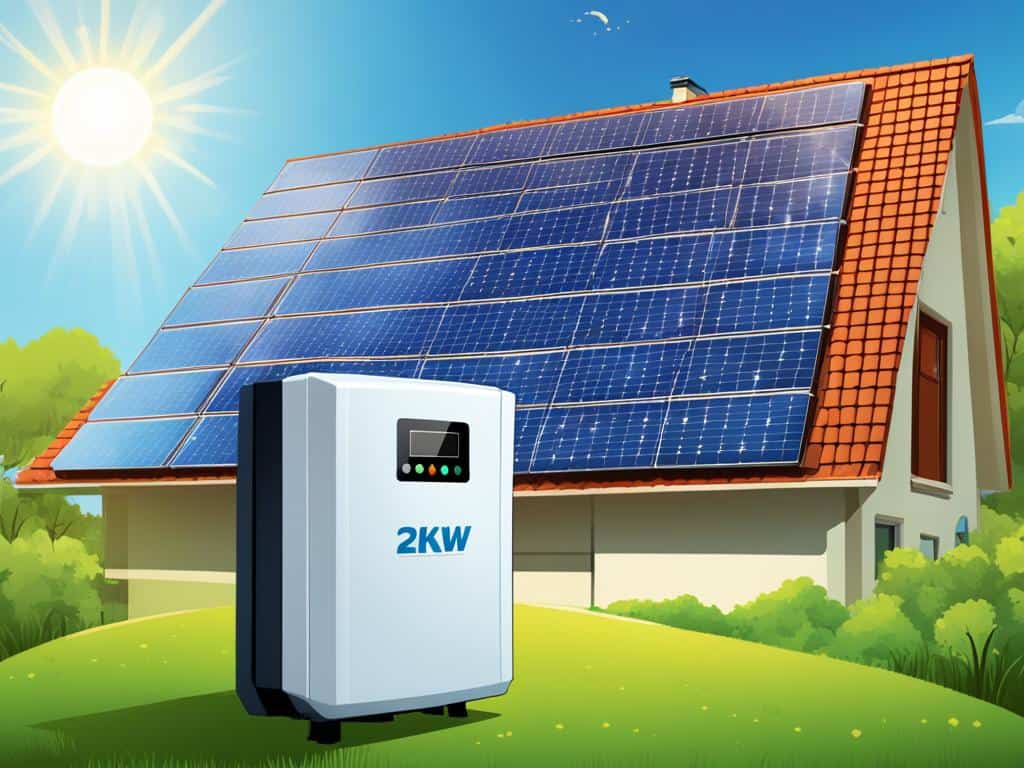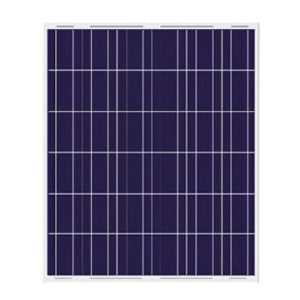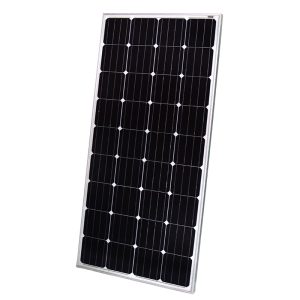In an era of increasing environmental consciousness and rising energy costs, solar power has emerged as a beacon of hope for homeowners and businesses alike. The 2kW solar system, in particular, has gained popularity as an entry-level option for those looking to harness the sun’s energy. This comprehensive guide delves into the economic and environmental implications of installing a 2kW solar system, exploring costs, benefits, and long-term impacts.
Understanding 2kW Solar Systems

A 2kW solar system is designed to generate 2 kilowatts of power under ideal conditions. Typically comprising 5-8 solar panels depending on their efficiency and wattage, this system size is well-suited for small homes or as a supplement to existing energy needs. Before diving into the economic and environmental aspects, it’s crucial to understand what a 2kW system entails:
Components of a 2kW Solar System
- Solar Panels: The primary component, responsible for capturing sunlight and converting it to electricity.
- Inverter: Converts the direct current (DC) generated by panels into alternating current (AC) for home use.
- Mounting Structure: Secures the panels to your roof or ground-mounted system.
- Batteries (optional): For off-grid systems or backup power storage.
- Wiring and Electrical Components: Connects the system and ensures safe operation.
Energy Output
Under optimal conditions, a 2kW solar system can produce approximately:
- 8 kWh of electricity daily
- 240 kWh monthly
- 2,880 kWh annually
This output can power various household appliances, including fans, TVs, LED lights, refrigerators, and even air conditioning for short periods.
Economic Implications of 2kW Solar Systems
The decision to invest in a solar system is often driven by potential economic benefits. Let’s break down the financial aspects of a 2kW solar installation:
Initial Costs
The cost of a 2kW solar system can vary significantly based on several factors:
- Geographic Location: Installation costs and available incentives differ by region.
- Equipment Quality: Higher efficiency panels and premium brands command higher prices.
- Installation Complexity: Roof type, pitch, and accessibility affect labor costs.
- Additional Components: Batteries for off-grid systems or monitoring equipment can increase costs.
As of 2024, the average cost of a 2kW solar system in the United States ranges from $4,000 to $6,000 before incentives or rebates. In India, prices range from ₹1,44,000 to ₹2,00,000 (approximately $1,730 to $2,400 USD), depending on the system type (on-grid, off-grid, or hybrid).
Cost Breakdown
Here’s a detailed breakdown of the average cost components for a 2kW solar system in the United States:
| Component | Estimated Cost Range (USD) |
|---|---|
| Solar Panels | $1,500 – $2,500 |
| Inverters | $400 – $800 |
| Mounting Hardware | $300 – $600 |
| Installation Labor | $1,000 – $1,500 |
| Permits and Inspection Fees | $100 – $300 |
| Miscellaneous (Wiring, Monitoring, etc.) | $700 – $1,300 |
Financial Incentives and Rebates
Government incentives and tax credits can significantly reduce the upfront cost of solar installations:
- Federal Solar Investment Tax Credit (ITC): As of 2024, the ITC allows for a 30% deduction on federal taxes for both residential and commercial solar energy systems. This rate is expected to remain in place until 2032.
- State and Local Incentives: Many states offer additional rebates, tax exemptions, or performance-based incentives. For example:
- In Texas, some utilities offer rebates based on system capacity.
- Property tax exemptions for solar installations are available in many states.
- Net Metering: Allows homeowners to sell excess electricity back to the grid, potentially earning credits on their utility bills.
Long-Term Savings and Return on Investment (ROI)
The economic benefits of a 2kW solar system extend far beyond the initial installation:
- Reduced Electricity Bills: By generating your own electricity, you can significantly lower your monthly utility costs. The exact savings depend on local electricity rates and your energy consumption patterns.
- Protection Against Rising Energy Costs: As electricity prices tend to increase over time, solar power provides a hedge against future rate hikes.
- Increased Property Value: Homes with solar installations often sell at a premium. A study by Lawrence Berkeley National Laboratory found that solar homes sold for an average of $15,000 more than comparable non-solar homes.
ROI Calculation Example
Assuming average conditions:
| Factor | Value |
|---|---|
| Annual Energy Production | 2,600 kWh |
| Average Cost of Electricity | $0.13 per kWh |
| Annual Savings | $338 |
| System Cost (After ITC) | $3,700 (average) |
| Payback Period | ~11 years |
| 25-Year Savings | ~$8,450 |
This example demonstrates that while the initial investment is significant, the long-term savings can be substantial, especially considering the typical 25-30 year lifespan of solar panels.
Environmental Impact of 2kW Solar Systems
The environmental benefits of solar energy are a primary driver for many adopters. Let’s explore the positive environmental impacts of a 2kW solar system:
Reduction in Greenhouse Gas Emissions
Solar energy significantly reduces the carbon footprint of electricity generation:
- A 2kW system can offset approximately 2 metric tons of CO2 annually.
- This is equivalent to:
- Planting around 35 trees per year
- Removing 0.5 cars from the road annually
- Saving over 220 gallons of gasoline each year
For perspective, powering an average home entirely with solar is equivalent to eliminating the emissions created by driving 19,316 miles in a typical car annually.
Decreased Reliance on Fossil Fuels
By generating clean electricity, solar systems reduce the demand for fossil fuel-based power:
- Unlike fossil fuels, solar energy is renewable and abundant. The sun provides more energy in one hour than the world uses in an entire year.
- Reduced fossil fuel extraction and burning leads to less air and water pollution, benefiting both human health and ecosystems.
Water Conservation
Traditional electricity generation often requires significant water usage for cooling. Solar panels, however, require minimal water for occasional cleaning, contributing to water conservation efforts.
Land Use Efficiency
Solar panels can be installed on existing structures like rooftops, requiring no additional land use. This efficiency is particularly beneficial in urban areas where space is at a premium.
Ecosystem Preservation
By reducing the need for fossil fuel extraction and transportation, solar energy helps preserve natural habitats and ecosystems that might otherwise be disrupted by energy production activities.
Challenges and Considerations
While the benefits of 2kW solar systems are numerous, it’s important to consider potential challenges:
Initial Investment
The upfront cost can be a barrier for some homeowners, despite long-term savings. However, various financing options, including solar loans and leases, are available to mitigate this challenge.
Weather Dependence
Solar panel efficiency can be affected by weather conditions, potentially impacting energy production during cloudy or rainy periods. However, advancements in panel technology continue to improve performance under less-than-ideal conditions.
Manufacturing Impact
The production of solar panels does have an environmental footprint, including energy use and the extraction of raw materials. However, the energy payback period for solar panels is typically very short, often less than two years, after which they produce net positive environmental benefits for decades.
Disposal and Recycling
As solar panels reach the end of their lifespan, proper disposal and recycling become important considerations. The solar industry is actively developing more efficient recycling processes to address this challenge.
Making the Decision: Is a 2kW Solar System Right for You?
Deciding whether to invest in a 2kW solar system requires careful consideration of several factors:
- Energy Consumption: Analyze your monthly electricity usage to determine if a 2kW system will meet your needs.
- Roof Condition and Orientation: Ensure your roof is in good condition and receives adequate sunlight throughout the day.
- Local Regulations and Incentives: Research local zoning laws, building codes, and available incentives that may affect your installation.
- Long-Term Plans: Consider how long you plan to stay in your current home, as the financial benefits accrue over time.
- Environmental Goals: Weigh the importance of reducing your carbon footprint and contributing to renewable energy adoption.
Conclusion
The 2kW solar system represents a significant step towards sustainable energy production for homeowners and small businesses. While the initial investment may seem substantial, the long-term economic benefits—including reduced electricity bills, protection against rising energy costs, and potential increases in property value—make it an attractive option for many.
Moreover, the environmental benefits of solar energy cannot be overstated. By reducing greenhouse gas emissions, decreasing reliance on fossil fuels, and contributing to ecosystem preservation, even a small 2kW system can have a meaningful impact on our planet’s health.As technology advances and costs continue to decrease, the accessibility and efficiency of solar energy systems are likely to improve further. For those considering the transition to solar power, a 2kW system offers a balanced entry point, providing tangible economic returns while making a positive environmental impact.
Ultimately, the decision to invest in a 2kW solar system is both a financial and ethical one. It represents a commitment to sustainable living and a proactive step towards a cleaner, more resilient energy future. As we face the challenges of climate change and resource depletion, every kilowatt of clean energy generated brings us closer to a more sustainable world.



